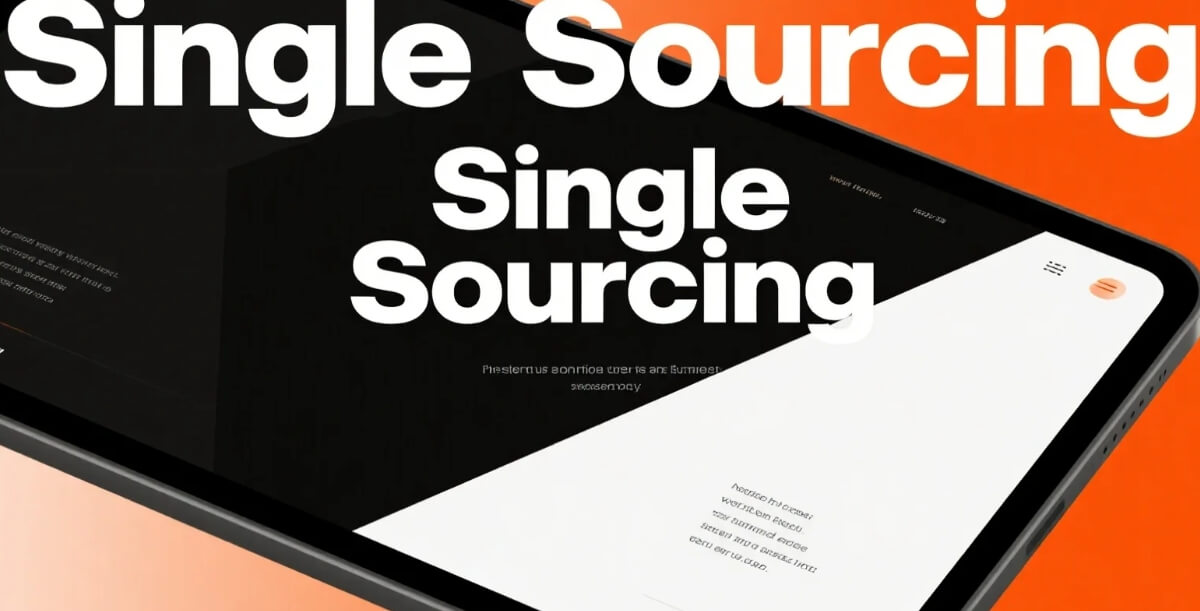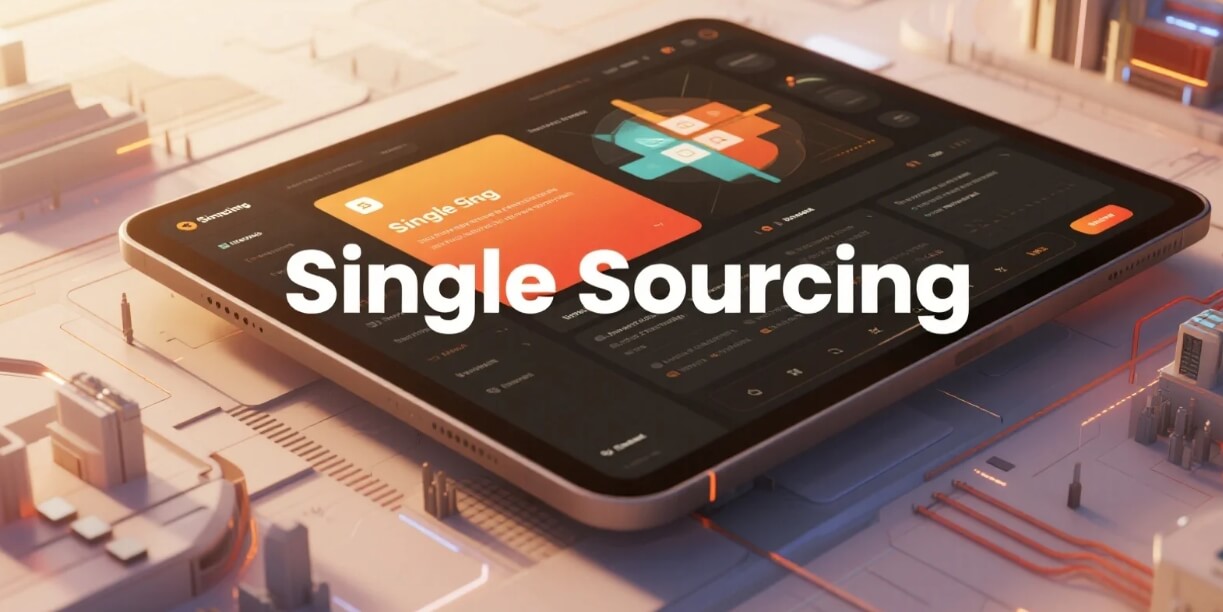Introduction: What Is Single Sourcing and How Does It Impact Procurement?
Single sourcing is a procurement strategy in which a company or organization chooses to purchase goods or services from only one supplier, instead of sourcing from multiple suppliers. This strategy can simplify the procurement process, foster closer relationships with suppliers, and lead to cost savings in some cases. However, single sourcing also presents certain risks, especially related to supplier dependency and market fluctuations.
For businesses operating in competitive markets, understanding the nuances of single sourcing is vital. In this article, we will explore its definition, benefits, challenges, and best practices for leveraging single sourcing effectively.

The Basics of Single Sourcing
To understand how single sourcing fits into the broader procurement strategy, it's important to first understand its key characteristics.
Defining Single Sourcing
In the simplest terms, single sourcing means relying on a single supplier to fulfill a particular need. This could be for raw materials, finished goods, or services that are critical to the business. Often, businesses turn to single sourcing when there is a strong supplier who offers the best value in terms of price, quality, or delivery performance.
Unlike competitive bidding, where multiple suppliers compete for a contract, single sourcing eliminates this competition and focuses exclusively on one vendor.
When Should You Consider Single Sourcing?
Businesses typically turn to single sourcing under specific circumstances:
-
Unique Product or Service: When a product is highly specialized or proprietary, there may be only one supplier capable of providing it.
-
Cost Efficiency: Some companies choose single sourcing to negotiate lower prices due to high order volumes.
-
Long-Term Relationships: Building a long-term partnership with a supplier can provide both parties with greater security and stability.
Benefits of Single Sourcing in Procurement
There are several reasons why businesses might choose single sourcing as a procurement strategy. Below are the main advantages:
Simplified Procurement Process
By working with only one supplier, businesses reduce the complexity of their procurement process. There’s no need to evaluate multiple vendors, review multiple contracts, or manage various relationships. This streamlined approach saves time and resources, especially for businesses with a high volume of purchases.
Stronger Supplier Relationships
When you rely on a single supplier, the relationship between the two parties becomes more robust. Over time, suppliers often offer better service, discounts, and flexibility to their long-term clients. This can lead to more favorable terms, better communication, and improved product quality.
Cost Savings and Economies of Scale
In many cases, single sourcing allows companies to negotiate better prices due to the larger volume of business they are providing to the supplier. Bulk orders, long-term contracts, and guaranteed sales often translate into discounted rates, leading to significant cost savings.
Reduced Administrative Costs
With a single supplier, the administrative burden is lighter. There are fewer contracts to manage, fewer payments to process, and fewer invoices to verify. This reduces the overall administrative costs and allows procurement teams to focus on other strategic activities.

Risks Associated with Single Sourcing
While single sourcing offers several benefits, it also comes with potential downsides that should be considered before making a decision.
Dependency on One Supplier
One of the biggest risks of single sourcing is the dependency on one supplier. If this supplier faces financial difficulties, quality issues, or disruptions in their supply chain, your business could experience delays or increased costs. Additionally, if the supplier’s production capacity is affected (due to equipment failure, natural disasters, etc.), it may be difficult to quickly find an alternative.
Lack of Supplier Competition
Without competition, suppliers may feel less inclined to offer the best possible prices or innovate. This lack of competitive pressure can lead to price increases over time or stagnation in product quality. It's essential to regularly monitor your supplier’s performance to ensure they continue to meet expectations.
Limited Flexibility
By committing to single sourcing, a business may limit its ability to adapt to changes in the market or supply chain disruptions. If another supplier offers better prices or higher-quality products, switching suppliers can be costly, time-consuming, and complex, especially if the supplier has proprietary technology or intellectual property involved.
Risk of Complacency
Over time, a lack of competition can lead to supplier complacency. They may not feel the pressure to improve their service, reduce lead times, or maintain high-quality standards. Regular performance evaluations and open communication channels are crucial to mitigating this risk.
How to Manage the Risks of Single Sourcing
To make single sourcing work effectively, businesses need to adopt strategies that minimize the associated risks.
Supplier Diversification as a Backup Plan
Even when single sourcing is the preferred strategy, it’s wise to have a backup supplier. This doesn’t mean you’re competing with the primary supplier, but having an alternative supplier on standby can protect your business in case the primary supplier fails to deliver.
Monitor Supplier Performance Regularly
Businesses should establish metrics to evaluate supplier performance regularly. These metrics could include quality checks, delivery times, and adherence to contractual terms. Conducting periodic reviews will help ensure that the supplier remains competitive and continues to meet business expectations.
Negotiate Long-Term Contracts with Escape Clauses
When entering into a single sourcing agreement, negotiate long-term contracts with built-in escape clauses. These clauses provide an exit strategy should the supplier fail to meet the terms of the contract. It's also important to include performance guarantees, such as quality assurance and delivery timelines.
Stay Informed About Market Trends
While single sourcing may initially seem like the best option, staying informed about market trends and new suppliers entering the market will help you make more informed decisions in the future. This helps to maintain bargaining power and ensures you’re not locked into unfavorable terms for too long.

FAQ: Common Questions About Single Sourcing
Q1: What is the difference between single sourcing and sole sourcing?
While single sourcing refers to the practice of purchasing from a single supplier, sole sourcing specifically means that the supplier is the only one capable of providing the required product or service. Sole sourcing usually occurs due to a lack of alternatives.
Q2: Can single sourcing be beneficial for small businesses?
Yes, single sourcing can be particularly beneficial for small businesses by allowing them to negotiate better prices and simplify procurement processes. However, small businesses must ensure that their chosen supplier is reliable and capable of meeting their needs consistently.
Q3: How do I know if single sourcing is the right choice for my business?
Single sourcing is often the right choice when a business needs a unique product or service, has strong relationships with a supplier, or is seeking cost efficiency through economies of scale. However, it’s essential to weigh the benefits against the risks of supplier dependency.













